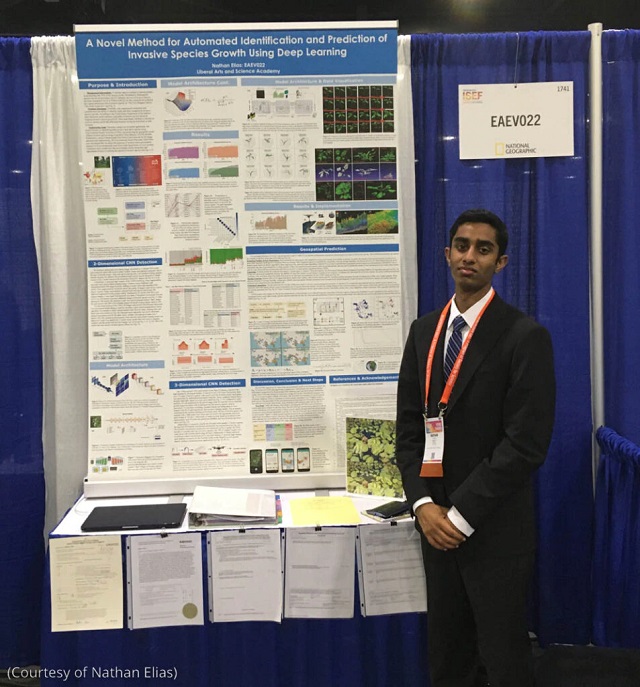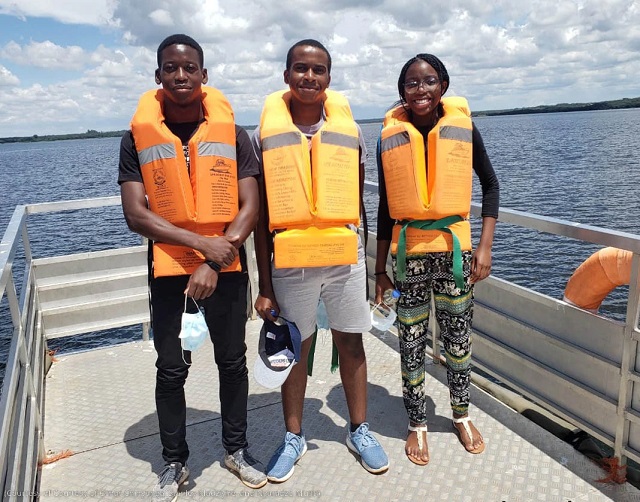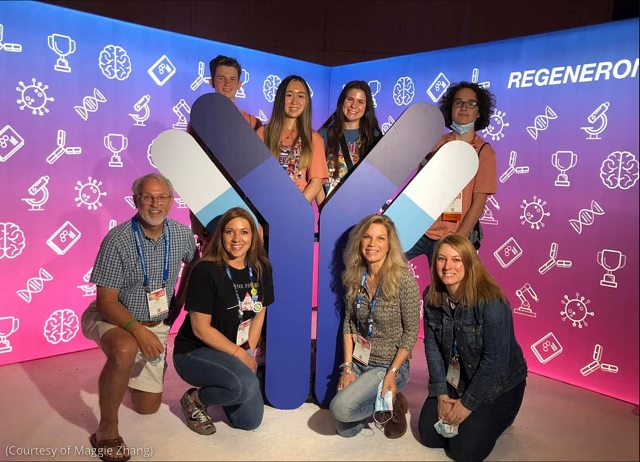After an invasive plant species destroyed his grandfather’s rice farm in India, Nathan Elias wanted to help. Elias, who lives in Texas, developed a system to help farmers detect and identify invasive species using their smartphones.
Through a smartphone camera and mobile app, Elias’ tool sends farmers’ images to experts who can quickly identify invasive species: nonnative plants, insects or other organisms that can harm crops. The system uses artificial intelligence to help farmers spot potential invasive species outbreaks.

Elias took second place in USAID’s Science for Development Award’s Agriculture and Food Security category. (Courtesy of Nathan Elias)
This novel tool is just one of the innovative student science and technology projects honored at the 2022 International Science and Engineering Fair (ISEF). Started in 2014, ISEF convenes 1,800 high school students from 75 countries to exhibit projects demonstrating ingenuity and innovation.
Scientific innovation is critical to the U.S. Agency for International Development’s (USAID) mission. The agency has deployed tools that forecast COVID-19’s impact on food security, boost trees’ benefits to urban environments and promote peace.
Each year at ISEF, USAID presents Science for Development Awards, which come with cash prizes. Elias, a winner in the Agriculture and Food Security category, used his winnings to send mobile phones and tablets to farmers in India.
Since May, 6,000 farmers in India and the United States have received the system, which USAID says has already prevented more than 10,000 incidents of invasive species growth.
Climate and environmental protection

USAID Science for Development Award first-place winners in Climate and Environmental Protection are (from left) Stanley Madziyire, Omar Chinyanga and Nyaradzo Mutiti. (Courtesy of Omar Chinyanga, Stanley Madziyire and Nyaradzo Mutiti)
Nyaradzo Mutiti, Omar Chinyanga and Stanley Madziyire, of Harare, Zimbabwe, developed a low-cost filter that removes metals and other contaminants from drinking water. The students created the reusable and biodegradable filter to address metals pollution in Lake Chivero, their home city’s primary drinking water source.
The three students plan to increase the filter’s absorption capability and present their innovation to Harare’s city leaders.
Global health

Maggie Zhang (standing second from left) created a new way to administer the HIV drug AZT to infants. (Courtesy of Maggie Zhang)
Maggie Zhang, of Kansas, created an oral film — similar to breath mint strips that dissolve in the mouth — to deliver the HIV drug AZT to infants between 6 and 12 weeks old. AZT prevents HIV transmission after exposure. Liquid AZT can be difficult to administer to infants.
Zhang plans to seek World Health Organization authorization for emergency use of the AZT delivery system.
Working in crisis and conflict
Inspired by a comic book’s robotic snake, Matthew Hansol Jabez Kim, from the U.S. state of Georgia, developed a robot to aid search and rescue missions after natural disasters. The robot is designed to break into smaller parts and efficiently search large areas, such as in the rubble of collapsed buildings, and locate survivors after disasters.
Kim is finalizing a prototype of his search and rescue robot and plans to develop a version for aquatic search and rescue.
Banner image: Nathan Elias, of Texas, created a tool to help farmers identify invasive species. USAID recently recognized Elias and other young innovators whose ideas could spur development efforts. (Courtesy of Nathan Elias)







COMMENTS0
LEAVE A COMMENT
TOP